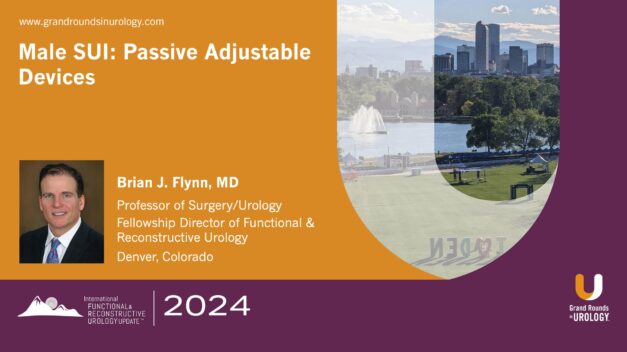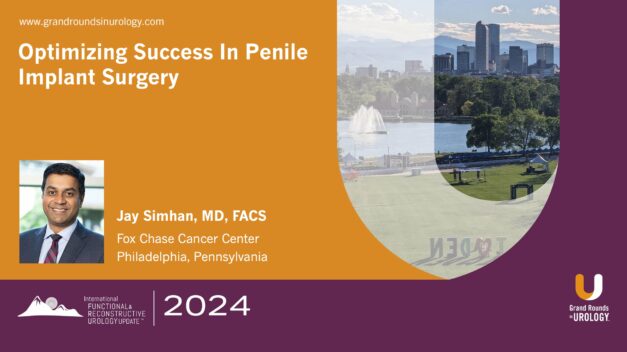Male SUI: Passive/Adjustable Devices
Brian J. Flynn, MD, delves into the categorization and management of devices for male stress incontinence, focusing on both passive and active options.
In this 20-minute presentation, he discusses passive devices, such as the advanced sling and newer adjustable slings like ARGUS and ATOMS, which offer various solutions for managing low-to-moderate leakage in non-radiated patients. He also introduces active devices, particularly the artificial urinary sphincter (AUS), but cautions that cognitive and dexterity issues often develop over time in long-term users. This has spurred interest in creating adjustable AUS devices that reduce the need for manual operation, potentially leading to fewer complications like urethral erosion.
Dr. Flynn then transitions to sharing a ProAct implantation technique, providing images and videos of procedures. He gives step-by-step instructions, beginning with optimal operating room setup. To provide the best learning opportunity, he also shares images of poor device placement and discusses correction, stressing the importance of learning from the mistakes of others.
Read More


